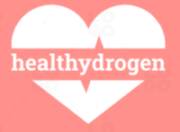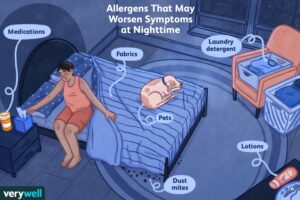
Introduction:
Allergies are a common problem that affects millions of people worldwide. They can be caused by a variety of substances, including pollen, dust, pet dander, and food. Allergies can range from mild to severe, with some people experiencing life-threatening reactions. Desensitization therapy is a treatment option for allergies that aims to reduce or eliminate a person’s sensitivity to an allergen. In this article, we will discuss desensitization therapy for allergies, including how it works, who is a good candidate for the treatment, and what to expect during the treatment process.
How does desensitization therapy work?
Desensitization therapy, also known as allergen immunotherapy, works by gradually exposing a person to increasing doses of an allergen over a period of time. This exposure helps the person’s immune system build up a tolerance to the allergen, which can reduce or eliminate allergic symptoms.
The therapy typically involves receiving injections of the allergen under the skin, although other methods, such as sublingual immunotherapy (SLIT) or oral immunotherapy (OIT), may be used in some cases. The injections are given at regular intervals, with the dose gradually increasing over time until the person is able to tolerate exposure to the allergen without experiencing allergic symptoms.

Allergy desensitization works by gradually exposing a person to increasing amounts of the allergen they are sensitive to, with the goal of reducing their sensitivity over time. The therapy involves injections of the allergen, and the dose is gradually increased over several months or years.
The therapy can also be administered through sublingual immunotherapy, which involves placing drops of the allergen under the tongue. The theory behind desensitization therapy is that by gradually increasing exposure to the allergen, the immune system will learn to tolerate it and stop overreacting to it.
Who is a good candidate for desensitization therapy?
Desensitization therapy is typically recommended for people who have allergies that are severe, persistent, or interfere with daily life. It may also be recommended for people who have allergies to multiple substances, which can make it difficult to manage symptoms with medication alone.
The therapy is most commonly used to treat allergies to pollen, dust mites, pet dander, and insect venom, although it may be used to treat other allergies as well. The therapy is generally not recommended for people with severe asthma, a history of anaphylaxis, or certain medical conditions, such as heart disease.
What are the benefits of desensitization therapy?

The main benefit of desensitization therapy is that it can reduce or eliminate a person’s allergic symptoms, which can improve quality of life and reduce the need for medication. In some cases, the therapy may also prevent the development of new allergies or asthma.
The therapy is also relatively safe when performed under the guidance of a qualified healthcare provider. While there is a risk of allergic reactions to the injections, these are typically mild and can be managed with medication.
What are the risks of desensitization therapy?
While desensitization therapy is generally safe, there is a risk of allergic reactions to the injections. These reactions can range from mild to severe, and may include symptoms such as hives, itching, swelling, and difficulty breathing.
In rare cases, anaphylaxis, a life-threatening allergic reaction, may occur. This is why desensitization therapy is typically administered in a medical setting, under the close supervision of a qualified healthcare provider.
What can I expect during the desensitization therapy process?
The desensitization therapy process typically involves several steps. First, you will undergo an allergy evaluation to determine which allergens you are sensitive to. Once this has been determined, you will begin receiving injections of the allergen under the skin.
The injections are given at regular intervals, with the dose gradually increasing over time. You will typically receive injections once a week or every other week, depending on your specific treatment plan.
It is important to continue receiving injections on a regular schedule, even if you do not experience immediate improvement in your symptoms. It can take several months to a year or more for the therapy to be effective.
Allergy desensitization therapy cost:
This refers to the cost associated with desensitization therapy, which is a treatment option for allergies. The cost of the therapy can vary depending on a number of factors, including the type of therapy, the frequency of treatment, and the healthcare provider administering the therapy.
Desensitization therapy allergy side effects:
This refers to the potential side effects that may occur during desensitization therapy for allergies. While the therapy is generally safe, there is a risk of allergic reactions to the injections, which can range from mild to severe.
Allergy desensitization injections:
This refers to the injections of an allergen that are administered during desensitization therapy. The injections are given at regular intervals, with the dose gradually increasing over time to build up the person’s tolerance to the allergen.
Peanut allergy desensitization:
This refers to desensitization therapy specifically for peanut allergies. The therapy involves exposing the person to increasing amounts of peanut protein over a period of time, with the goal of reducing or eliminating their sensitivity to peanuts.
Allergy desensitization food:
This refers to desensitization therapy for food allergies. The therapy may involve exposing the person to small amounts of the allergen in food form, with the goal of building up their tolerance over time.
Allergy desensitization at home:
This refers to the practice of administering desensitization therapy at home, rather than in a medical setting. While some forms of desensitization therapy, such as sublingual immunotherapy, may be safe to administer at home, it is generally recommended that the therapy be administered under the guidance of a qualified healthcare provider.
Allergy desensitization NHS:
This refers to the availability of desensitization therapy through the National Health Service (NHS) in the UK. The NHS may offer desensitization therapy as a treatment option for severe or persistent allergies.
Hay fever immunotherapy cost:
This refers to the cost associated with immunotherapy, which is a type of desensitization therapy used to treat hay fever. The cost of the therapy can vary depending on a number of factors, including the type of therapy, the frequency of treatment, and the healthcare provider administering the therapy.
How long does allergy desensitization take to work?
The length of time it takes for allergy desensitization to work can vary depending on the individual and the severity of their allergy. In some cases, patients may begin to see improvement in their symptoms after just a few months of treatment.
In other cases, it may take up to a year or more before a noticeable improvement is seen. It’s important to note that desensitization therapy is a long-term treatment approach, and the full benefits of the therapy may not be seen until several years of treatment have been completed.
How long does allergy desensitisation last?
The duration of the benefits of allergy desensitization can also vary from person to person. Some people may experience long-lasting relief from their allergy symptoms after completing desensitization therapy, while others may need to continue treatment indefinitely to maintain their tolerance to the allergen. It’s also possible for the benefits of desensitization therapy to wear off over time, especially if the patient stops receiving regular injections or other forms of treatment.
What are the side effects of allergy desensitization?
While allergy desensitization is generally safe, there is a risk of side effects associated with the therapy. The most common side effect is a local reaction at the injection site, which may include redness, swelling, or itching. In some cases, patients may also experience systemic reactions, which can include hives, difficulty breathing, or anaphylaxis (a severe allergic reaction).
It’s important to note that systemic reactions are rare, but they can be life-threatening if they occur. Patients undergoing desensitization therapy should be closely monitored by their healthcare provider for any signs of an allergic reaction.
conclusion
In conclusion, allergy desensitization therapy can be an effective treatment option for those who suffer from severe or persistent allergies. The therapy involves gradually exposing the person to increasing amounts of the allergen over time, with the goal of building up their tolerance and reducing their sensitivity to the allergen.
While desensitization therapy is generally safe, there is a risk of side effects, and patients should be closely monitored by a healthcare provider throughout the course of treatment. The length of time it takes for the therapy to work can vary, and some patients may need to continue treatment indefinitely to maintain their tolerance. Overall, desensitization therapy can provide relief from allergy symptoms and improve the quality of life for those who suffer from allergies.






